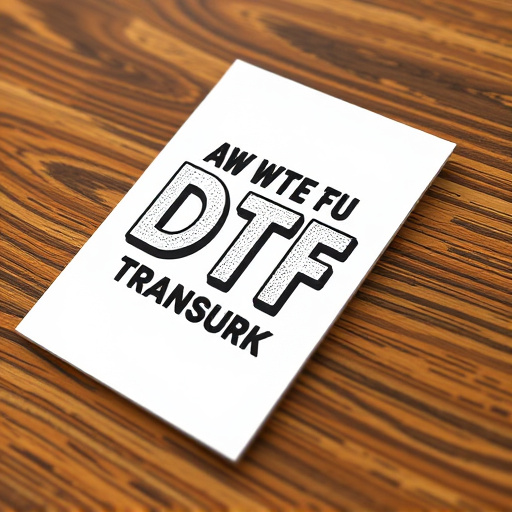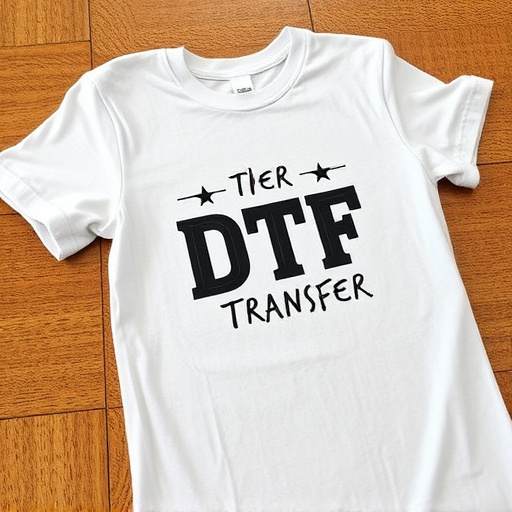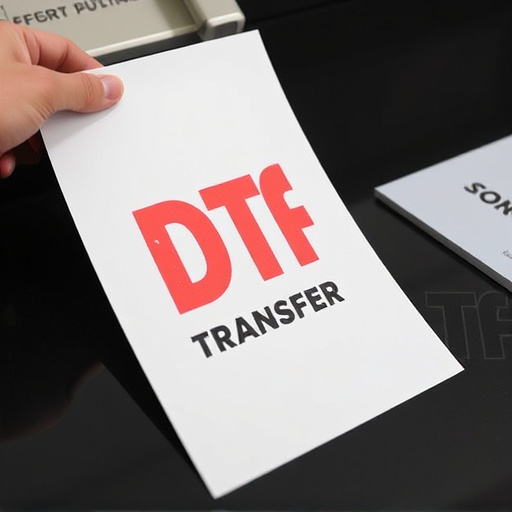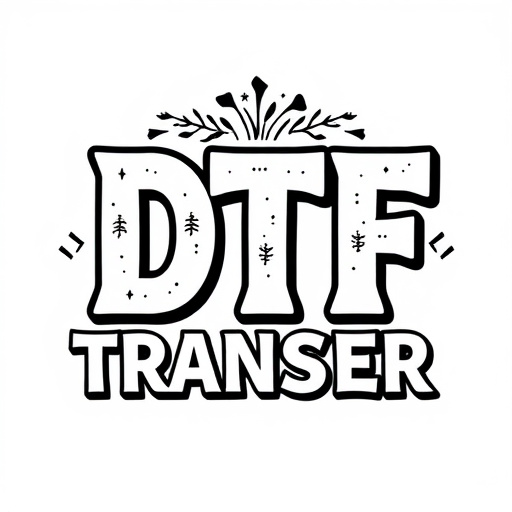Direct-to-Film (DTF) transfers offer vibrant, durable prints for art and commercial signage. Key factors influencing lifespan include image quality, film/ink choice, storage conditions, and testing protocols. Misconceptions about DTF durability can be dispelled by using high-quality materials and expert installation. Best practices for storing and maintaining DTF transfers ensure longevity, while case studies highlight their reliability in diverse sectors.
Direct-to-film (DTF) transfers have gained popularity for their vibrant colors and fast production times. However, understanding the durability of these prints is crucial for businesses and artists alike. This article explores the lifespan of DTF transfers, delving into factors influencing their longevity, testing methods, common myths, and best practices to ensure lasting quality. By examining real-world applications, you’ll gain valuable insights into maximizing the durability of your DTF prints.
- Understanding Direct-to-Film (DTF) Transfers: A Brief Overview
- The Factors Influencing DTF Transfer Lifespan
- Testing and Measuring DTF Print Durability
- Common Myths and Misconceptions About DTF Lifespan
- Best Practices for Maximizing the Longevity of Your DTF Prints
- Real-World Applications and Case Studies
Understanding Direct-to-Film (DTF) Transfers: A Brief Overview

Direct-to-Film (DTF) transfers are a cutting-edge printing technique revolutionizing the way we produce and preserve images, artwork, and designs. This method involves transferring ink directly onto a film surface, creating a highly durable and vibrant print. DTF offers a range of benefits, particularly in terms of quality and longevity, making it a popular choice for various applications. From artistic expressions to commercial signage, DTF prints have gained traction due to their ability to capture intricate details and colors accurately.
The process starts with a high-resolution digital image that is optimized for printing. This image is then transferred onto a film, often using specialized equipment, ensuring precise color reproduction and sharp details. The result is a film that can be used for multiple prints, making it an efficient and cost-effective solution. DTF transfers are known for their exceptional durability, resistance to fading, and ability to withstand outdoor conditions, making them ideal for long-term displays and advertisements.
The Factors Influencing DTF Transfer Lifespan

The lifespan of a direct-to-film (DTF) transfer is influenced by several key factors. One of the primary considerations is the quality of the original print or image being transferred. High-resolution prints with sharp details and vibrant colors tend to yield better results, ensuring that the final transfer maintains its visual integrity. The choice of film and ink also plays a crucial role; professional-grade materials designed specifically for DTF printing can significantly extend the lifespan of the transfers.
Environmental conditions are another significant factor. Exposure to direct sunlight and heat can accelerate the degradation of the films and inks, leading to fading and cracking over time. Additionally, improper storage practices, such as keeping prints in humid or dirty environments, can compromise their longevity. Therefore, it’s essential to store DTF prints in cool, dry places away from direct light sources and maintain them in clean conditions for optimal lifespan.
Testing and Measuring DTF Print Durability

The durability of a DTF (Direct-to-Film) transfer is crucial for ensuring that printed designs last over time, especially in high-traffic environments. To accurately assess this, rigorous testing protocols are implemented. These tests involve exposing DTF prints to various conditions, including UV light, moisture, and scraping, to mimic real-world scenarios. The goal is to determine how well the transfer withstands fading, peeling, or chipping.
Measuring durability involves quantifying key factors such as color vibrancy, adhesion strength, and surface resistance to damage. Specialized equipment and subjective visual assessments are employed to gauge these aspects. By standardizing testing methods, manufacturers can provide consumers with reliable information about DTF transfer lifespans, enabling them to make informed decisions for their specific application needs.
Common Myths and Misconceptions About DTF Lifespan

Many misconceptions surround the lifespan of direct-to-film (DTF) transfers and prints, often leading to confusion among consumers and businesses alike. One of the most common myths is that DTF printing is inherently inferior or less durable than traditional printing methods. This isn’t entirely true; when executed correctly, DTF transfers can offer excellent longevity. The durability of a DTF print largely depends on factors such as ink quality, substrate choice, and application techniques.
Another prevalent misunderstanding is that all DTF transfers are equally long-lasting. In reality, the lifespan of a DTF transfer varies based on the specific materials used and environmental conditions. For instance, outdoor DTF prints may have a shorter lifespan due to exposure to sunlight and weather elements compared to indoor prints. Additionally, improper application or poor-quality inks can significantly impact the overall durability. Therefore, it’s crucial to choose reputable suppliers who offer high-quality inks and ensure proper installation techniques for optimal DTF transfer longevity.
Best Practices for Maximizing the Longevity of Your DTF Prints

To maximize the longevity of your direct-to-film (DTF) transfers, several best practices should be implemented. First, always use high-quality materials and inks designed specifically for DTF printing. This ensures optimal adhesion and prevents premature fading or peeling. Additionally, proper preparation of the substrate is crucial; ensure it’s clean, free from debris, and appropriately primed to enhance durability.
Regular maintenance and care are also key. Avoid exposing DTF prints to direct sunlight for extended periods, as UV rays can degrade the inks. Instead, store them in a cool, dry place, away from harsh environmental conditions. Consider using protective coatings or laminates to provide an extra layer of defense against wear and tear. Lastly, handle the prints with care; avoid excessive touching or scraping, which could damage the delicate film surface.
Real-World Applications and Case Studies

In real-world applications, Direct-to-Film (DTF) transfer technology has proven its mettle across various industries. From outdoor signage and advertising to event branding and even in the fashion industry, DTF transfers offer a durable and cost-effective solution for long-lasting prints. Case studies have shown that DTF prints can withstand harsh environmental conditions, including direct sunlight, rain, and extreme temperatures, making them ideal for both indoor and outdoor use.
For instance, in the signage sector, businesses have reported exceptional longevity of DTF transfers on vinyl banners, with some prints remaining vibrant and intact after over two years of continuous exposure to the elements. Similarly, in the fashion industry, clothing manufacturers have adopted DTF printing for creating personalized, high-quality designs that resist fading and peeling, ensuring customer satisfaction and brand loyalty. These real-world applications underscore the durability and versatility of DTF transfers, making them a preferred choice for professionals seeking long-lasting, visually appealing prints.














